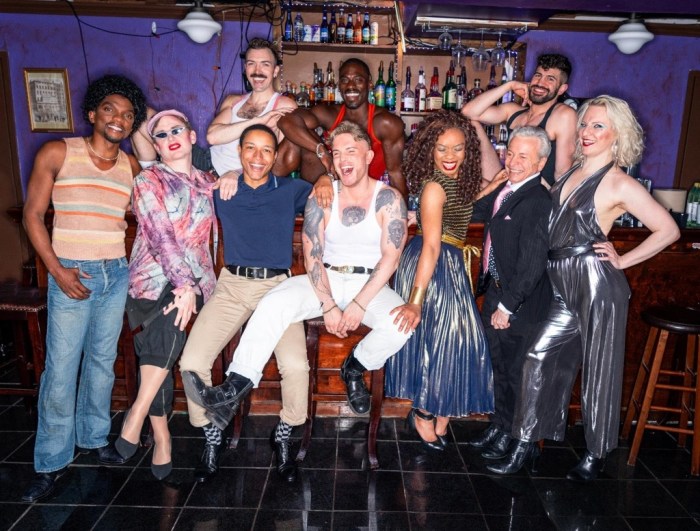Don’t let the gentle, elegiac tone or simple straightforwardness of Horton Foote’s “The Orphan’s Home Cycle” fool you. This is a rich, complex, distinctly American piece of literature that illuminates all manner of human feeling and interaction, but with an economy and lyricism that often take your breath away, and leave you on the edge of your seat — and the edge of tears.
Prior to his death last year at 92, Foote took nine of his plays and edited them into a nine-hour theatrical epic that is now at the Signature Theatre Company in a co-production with the Hartford Stage. A prolific writer with a shelf of plays, memoirs, and screenplays to his credit, Foote never wandered far from his hometown of Wharton, Texas, in his writing.
The first two parts of Horton Foote’s epic are a kind of heaven
Reading his first memoir, “Farewell,” we meet many of the people who became models for characters in his plays. Foote is unstinting in detail and consistently gives us fully rounded characters. In his epic scope, he reminds one of Steinbeck, and in his clear-eyed etching of idiosyncrasy, he recalls Faulkner, but he has a tone all his own — the plain language of the West. One has to listen carefully and watch, as his main character Horace Robedaux does throughout.
Seeing the first two installments of the “Cycle” in one day is a kind of luxury rarely afforded in the theater or in hectic New York lives. It takes six hours, but it’s worth every beautifully conceived moment. The first part, “The Story of a Childhood,” follows Horace from age 12 to 22, beginning in 1902. We watch as he loses his father, sees his mother remarried to a man who doesn’t want Horace around, and struggles to make something of himself in the world.
Returning as an adult in “Lily Dale,” the final play of the “Cycle”’s first part, Horace tries to reestablish a relationship with his family, but his mother can’t risk losing her security. Like Clyde Griffiths in Dreiser’s “An American Tragedy,” Horace yearns for a life that seems unattainable as struggles to define himself in a rapidly changing America, where there is opportunity but he remains very much alone.
Fortunately, his fate is less dire than Clyde’s, and in the second part, “The Story of a Marriage,” we watch as Horace, a young man making his living as a traveling salesman (a roguish and “fast” creature of the times), falls in love with Elizabeth Vaughn and marries her against her family wishes. She leaves her well-appointed home to live with Horace in a boarding house with some quirky denizens, where their love carries them through all their struggles.
The final play in the part is called “Valentine’s Day,” but it is no sentimental wallow. Elizabeth and Horace’s love is not without its costs, yet what they find in each other tempers the hardship of their life. As the play ends, we sense that Horace has finally found the tender mercies and human connection he craved all his life.
The company is absolutely incredible. Three actors play Horace, but Bill Heck takes over for the last four plays as the adult Horace, and his portrayal is nuanced and intelligent, both brash and vulnerable. Annalee Jefferies is sublime as Corella, Horace’s mother. Corella is caught between her son and her new husband, and Jefferies fills every moment of her performance in ways that are compelling and heartbreaking. Jefferies shows up again in “Courtship” as a widowed aunt, harrumphing her way through an evening as young people flout convention and ignore their parents.
Other notables are James DeMarse as Horace’s grandfather in the first part and father-in-law in the second, Hallie Foote as Mrs. Vaughn, Elizabeth’s mother, and Devon Abner in several roles, including Horace’s stepfather. No matter how small or seemingly incidental the role, each actor fills it completely and is indispensable to this intriguing world’s creation.
Like Foote’s writing, Michael Wilson’s direction is economical but completely on point. The plays unfold almost cinematically, with original music by John Gromada, evocative lighting by Rui Rita, innovative, spare, and effective set design by Jeff Cowie and David M. Barber, and simply extraordinary costume design by David C. Woolard.
It’s rare that six hours doesn’t seem time enough to spend with characters, but they are haunting and remain with one long after the final curtain. Audiences may be loathe to leave these characters behind, and should take solace in the fact that the third part begins performances later this month.
Now here’s the thing: This is a tough ticket to get. There are several marathon days, which will present all three parts, but these are reportedly sold out. Still, there are cancellations, and inclement weather has kept some people home from performances. If you’re not lucky enough to have seats already, your best bet is heading to the box office and hoping for the best. It’s worth the trip.
Complete Information:
THE ORPHAN'S HOME CYCLE
Signature Theatre
555 W. 42nd St.
Three plays in repertory
Tue.-Fri. at 7 p.m.; Sat. at 8 p.m.
Wed., Sat. & Sun. at 2 p.m.
$20; signaturetheatre.org
Or 212-244-7529


































